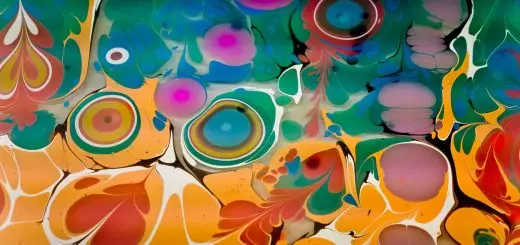Spanish Dragon Tales: Myths & Legends

Looking for more amazing products? Check out our online store and explore our collection here! Happy shopping!
Before diving in, please note: This post is for informational purposes only. If you’d like to know more about how we approach topics, feel free to check out our friendly Disclaimer Page.
Hey there, amazing readers! 
We’re committed to delivering quality posts, and your support (even just sticking around despite the ads) means everything to us. So, bear with us, and thanks for helping us keep the good vibes rolling. Now, on to the fun stuff!
TRANSLATE BUTTON AT THE END OF THE ARTICLE
A Quick Overview
Dragons have long been a prominent feature in Spanish folklore, with tales of these mythical creatures dating back centuries.
In Spanish culture, dragons are often depicted as powerful and fearsome creatures, embodying both good and evil qualities.
These creatures have played a significant role in shaping the stories, art, and architecture of Spain.
From legends of heroic knights battling dragons to stories of wise and benevolent creatures, Spanish dragon tales are rich in symbolism and meaning.
In this article, we will explore the origins, variations, and significance of dragons in Spanish myths and legends.
The Origins of Spanish Dragon Tales
The origins of Spanish dragon tales can be traced back to ancient times when stories of dragons were passed down through oral tradition.
These tales were often used to explain natural phenomena or to teach moral lessons.
The image of the dragon in Spanish folklore is influenced by a combination of Celtic, Roman, and Arabic traditions, each contributing to the unique characteristics of these mythical creatures.
Mythical Creatures in Spanish Folklore
In Spanish folklore, dragons are not the only mythical creatures that capture the imagination of the people.
Other fantastical beings such as the basilisk, the griffin, and the chimaera also have a place in Spanish mythology.
These creatures often play roles similar to dragons, representing forces of good or evil and serving as symbols of power and wisdom.
Famous Dragon Legends in Spanish Culture
One of the most famous dragon legends in Spanish culture is the story of Saint George and the Dragon.
This tale tells of a brave knight who rescues a princess from a fearsome dragon, symbolizing the triumph of good over evil.
Another well-known dragon legend is the story of the Cuelebre, a serpent-like dragon from Asturian folklore that guards treasures and protects the land.
Symbolism of Dragons in Spanish Myths
Dragons in Spanish myths often symbolize power, wisdom, and protection.
They are seen as guardians of hidden treasures or as fierce protectors of their territories.
In some stories, dragons are also seen as malevolent creatures that must be defeated by heroes or virtuous individuals.
The symbolism of dragons in Spanish myths reflects the values and beliefs of the culture, highlighting themes of courage, loyalty, and honor.
Variations of Dragons in Spanish Stories
In Spanish stories, dragons come in many different forms, each with its own unique characteristics and abilities.
Some dragons are depicted as winged creatures with fire-breathing abilities, while others are serpentine beasts that dwell in deep caves or underground lairs.
These variations in dragon lore add depth and complexity to the myths and legends surrounding these creatures.
The Role of Dragons in Spanish Literature
Dragons have been a popular theme in Spanish literature for centuries, appearing in epic poems, plays, and novels.
Writers such as Miguel de Cervantes and Garcilaso de la Vega have incorporated dragons into their works, using these mythical creatures to explore themes of heroism, redemption, and the struggle between good and evil.
Dragons in Spanish literature serve as powerful symbols that add depth and drama to the stories they inhabit.
Dragon Sightings in Spanish History
Throughout Spanish history, there have been numerous reported sightings of dragons, sparking fear and fascination among the people.
These sightings were often attributed to natural phenomena or misunderstood animals, but they fueled the legends and myths surrounding dragons in Spanish culture.
Some sightings were even believed to be divine omens or warnings of impending danger.
Dragons in Spanish Art and Architecture
Dragons have long been a popular subject in Spanish art and architecture, with depictions of these mythical creatures appearing in paintings, sculptures, and even on buildings.
The intricate designs and elaborate details of these dragon representations showcase the creativity and imagination of Spanish artists and architects.
Dragons are often used as decorative motifs, symbolizing strength, protection, and prosperity.
Spanish Dragon Tales in Modern Media
In modern times, Spanish dragon tales continue to capture the imagination of people around the world through various forms of media.
From movies and television shows to video games and comic books, dragons remain a popular theme in popular culture.
These modern interpretations of Spanish dragon tales often blend traditional folklore with contemporary storytelling techniques, appealing to audiences of all ages.
Moral Lessons in Spanish Dragon Legends
Many Spanish dragon legends are steeped in moral lessons and allegorical themes that teach important values to the audience.
Whether it is the importance of bravery and courage in the face of adversity or the triumph of good over evil, these stories offer valuable insights into the human experience.
Through the adventures of knights, princesses, and dragons, Spanish legends impart timeless lessons that resonate with audiences to this day.
Comparing Spanish Dragon Myths to Others
While dragons are a common feature in myths and legends around the world, Spanish dragon tales have their unique characteristics and themes that set them apart.
The combination of Celtic, Roman, and Arabic influences in Spanish folklore gives these dragon stories a distinctive flavor that reflects the cultural heritage of the region.
By comparing Spanish dragon myths to those of other cultures, we can gain a deeper understanding of the universal appeal and enduring power of these mythical creatures.
Celebrating Dragons in Spanish Festivals
In Spain, dragons are often celebrated in festivals and events that pay homage to these mythical creatures.
One such festival is the Feast of Saint George, where communities come together to reenact the legendary tale of the knight and the dragon.
Other festivals, such as the Fiesta de San Juan, feature dragon dances, parades, and other festivities that honor the role of dragons in Spanish culture.
These celebrations serve as a reminder of the enduring legacy of dragons in Spanish folklore and their continued significance in the modern world.
Conclusion
Spanish dragon tales are a rich tapestry of myths and legends that have captivated audiences for centuries.
From stories of brave knights battling fearsome beasts to tales of wise and benevolent creatures, dragons in Spanish folklore embody a wide range of themes and symbols.
Through literature, art, and cultural celebrations, dragons continue to play a significant role in Spanish culture, inspiring creativity, imagination, and a sense of wonder.
By exploring the origins, variations, and significance of dragons in Spanish myths, we gain a deeper appreciation for these mythical creatures and the enduring legacy they hold in the hearts and minds of the Spanish people.

The Enlightenment Journey is a remarkable collection of writings authored by a distinguished group of experts in the fields of spirituality, new age, and esoteric knowledge.
This anthology features a diverse assembly of well-experienced authors who bring their profound insights and credible perspectives to the forefront.
Each contributor possesses a wealth of knowledge and wisdom, making them authorities in their respective domains.
Together, they offer readers a transformative journey into the realms of spiritual growth, self-discovery, and esoteric enlightenment.
The Enlightenment Journey is a testament to the collective expertise of these luminaries, providing readers with a rich tapestry of ideas and information to illuminate their spiritual path.
Our Diverse Expertise
While our primary focus is on spirituality and esotericism, we are equally passionate about exploring a wide range of other topics and niches 

To ensure we provide the most accurate and valuable insights, we collaborate with trusted experts in their respective domains 
Our blog originally focused on spirituality and metaphysics, but we’ve since expanded to cover a wide range of niches. Don’t worry—we continue to publish a lot of articles on spirituality! Frequently visit our blog to explore our diverse content and stay tuned for more insightful reads.
Hey there, amazing reader! 
Check out our store here and take a peek at some of our featured products below! Thanks for being awesome!













